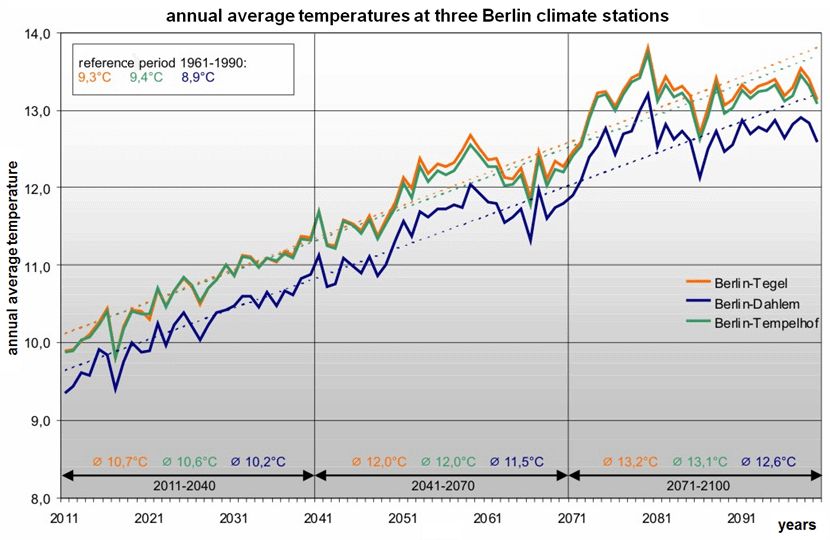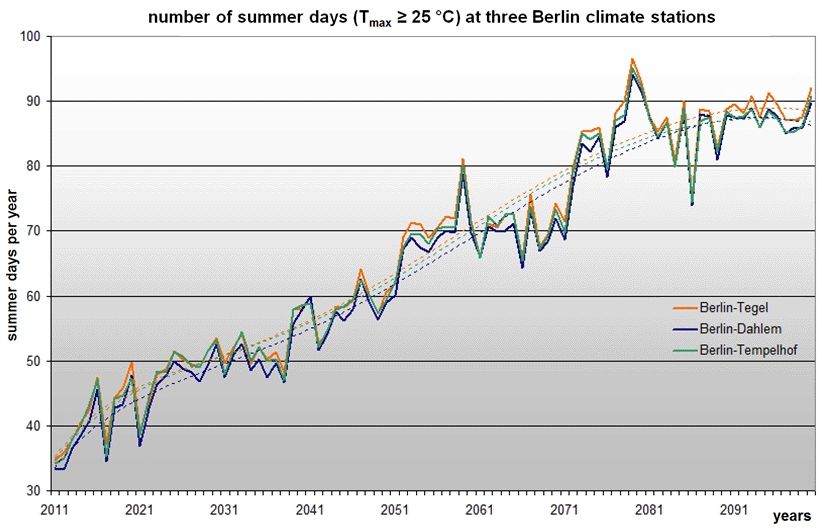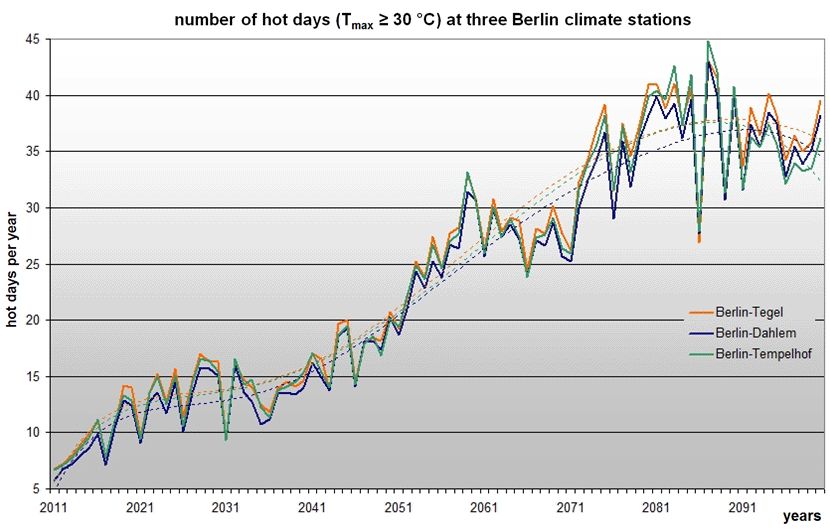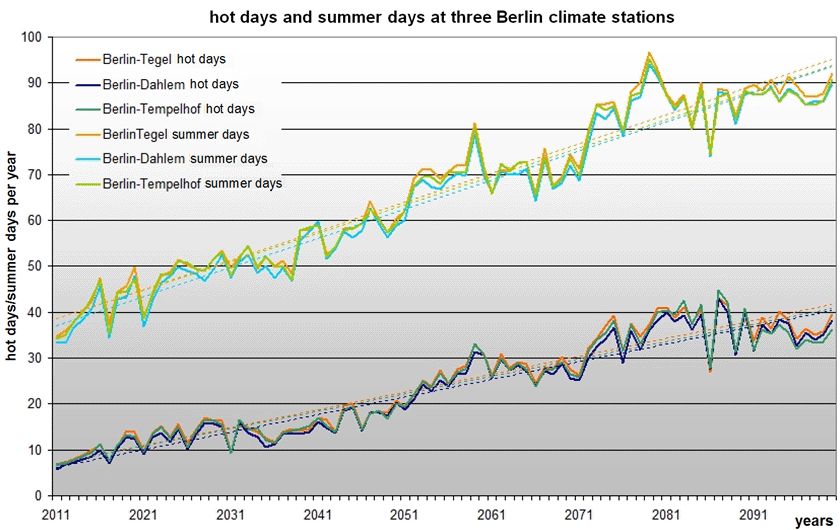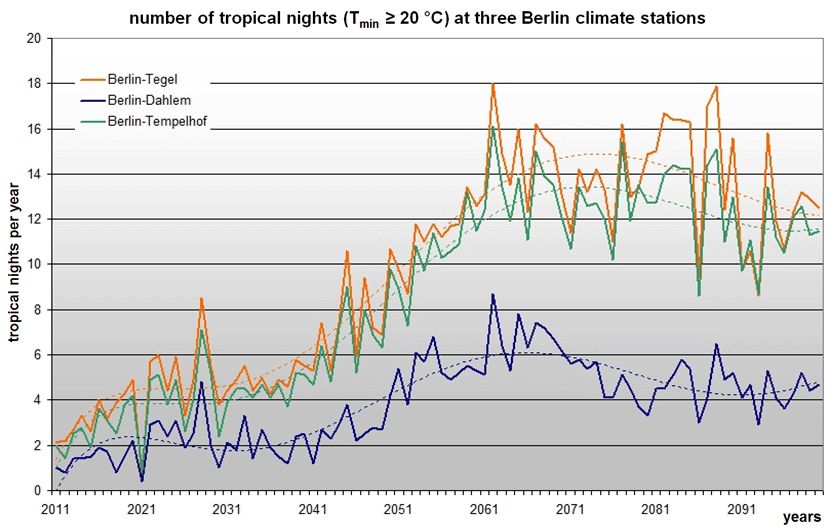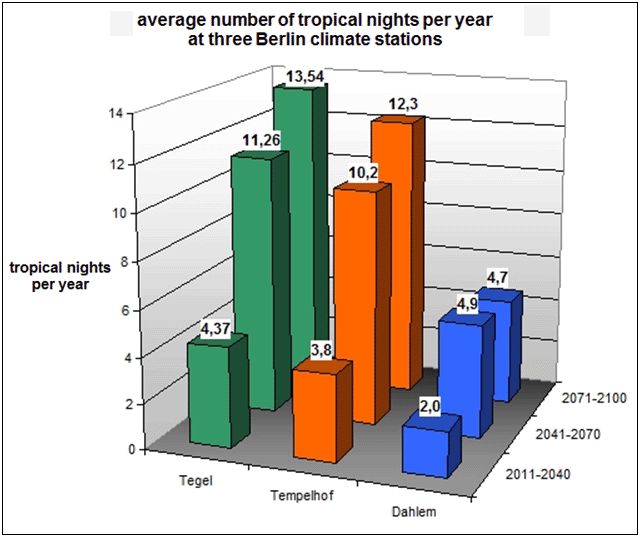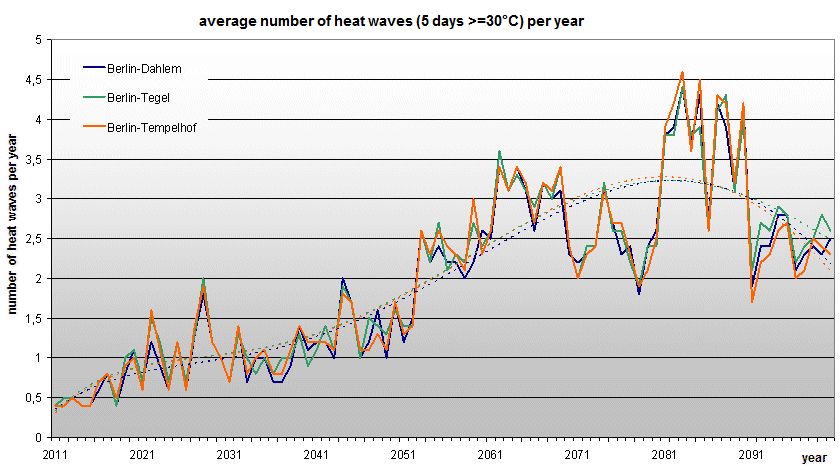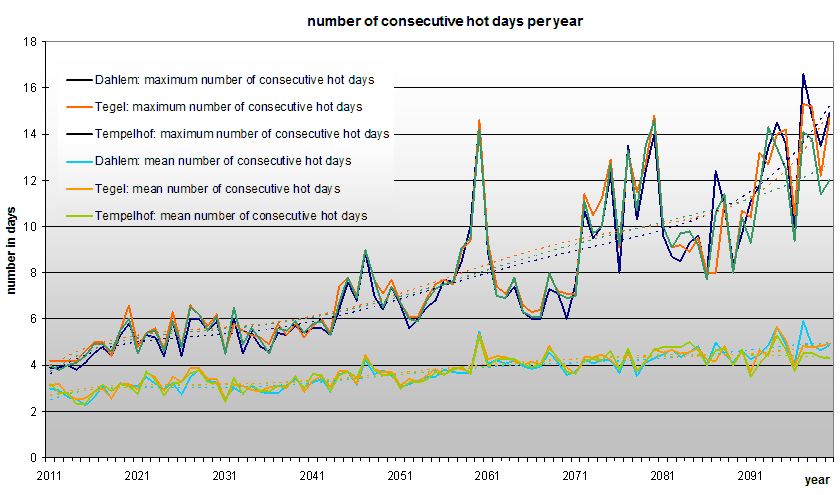Preliminary remark
The climate change that is taking place according to the findings of the IPCC (IPCC 2014) will have impacts also on Berlin in different areas of life.
The State of Berlin has long recognized the urgency that these prognoses imply for the city and has responded with already prepared plans and measures addressing both the area of mitigation and that of adaptation, and is continuously developing them further.
Detailed information on these goals and fundamentals as well as on agreements and measures already adopted is available and regularly updated on the pages Climate Protection of the Senate Department.
In the framework of the aforementioned ERDF project "GIS-based modelling of parameters relevant to urban climate on the basis of high-resolution data on buildings and vegetation" (GEO-NET 2014), an estimation of the possible future development of the climate in Berlin was carried out with respect to the evaluation of three climate stations: Berlin-Dahlem, Berlin-Tempelhof and Berlin-Tegel. For these stations, prognostic data of the regionalisation model WettReg 2010 (CEC Potsdam) are available that are used to assess the future situation. The regional climate model WettReg was already used in the framework of the co-operation agreement between the German Meteorological Service (DWD), Section Climate and Environmental Consulting and the Senate Department for Urban Development, Section Geo-Information, Unit Urban and Environmental Information System, which resulted in the first comprehensive illustrations of the possible effects of climate change on the changes in the temperature behaviour being prepared for Berlin (SenStadt 2010).
For more information on WettReg, the uncertainty necessarily inherent in climate projections and further conditions, see the explanations presented in connection with this work in the accompanying text of the Environmental Atlas (cf. 04.12, Chapter Methodology) .
For the estimations described below, the regional climate model WETTREG 2010 was applied to the 3 Berlin climate stations mentioned, with 10 model runs each with the emission scenario A1B.
Results of the regional climate model WETTREG 2010 for three selected climate stations in Berlin
The climatic system in Berlin that is segmented according to the urban structures will be fundamentally preserved for autochthonous[1] weather conditions under the influence of climate change. However, due to the gradual warming of the atmosphere, relevant changes are to be expected in the course of the century for the human-biometeorological load level. These developments will be quantified in the following. The time periods 2011-2040, 2041-2070 and 2071-2100 will be considered, as is usual for such investigations.
Annual mean values of the air temperature
The development of the local near-ground annual average temperature is a first indicator for the extent of the future human-biometeorological load situation in Berlin. It has risen moderately but steadily since the beginning of the Industrial Revolution, and in the past climate normal period 1961-1990 it was 8.9, 9.3 and 9.4 °C, respectively, for the three climate stations considered in Berlin (see Fig. 8.2). Under the influence of climate change, this development will not only continue but will intensify already in the coming decades. Taking the scenario A1B as a basis yields a further increase
- +in the short term+ (climate period 2011-2040) by +1.4 K (Kelvin) (Tegel), +1.2 K (Tempelhof) and +1.3 K (Dahlem),
- +in the medium term+ (2041-2070) by +2.7 K (Tegel), +2.6 K (Tempelhof) and 2.6 K (Dahlem) and
- +in the long term+ (2071-2100) by +3.9 K (Tegel), +3.7 K (Tempelhof) and +3.7 K (Dahlem).
As illustrated in Figure 8.2, a steady rise in the annual average temperatures up to the end of the 21st century is to be expected. The development of the annual mean temperatures is subject to the natural fluctuations of the climate. The climate stations Berlin-Tegel and Berlin-Tempelhof exhibit a very similar development of the temperatures. The Dahlem station shows less pronounced values throughout. This reflects the location of the climate stations in the urban space. Whereas the Berlin-Tegel and Berlin-Tempelhof stations represent relief spaces within densely built-up urban areas, the Berlin-Dahlem station has a more peripheral location. The heat island effect is not as pronounced here as at the other two sites. Data from a station with a very urban location in very densely built-up areas (e.g. Berlin-Alexanderplatz), in which even higher temperatures are to be expected overall, are not available for this evaluation.

